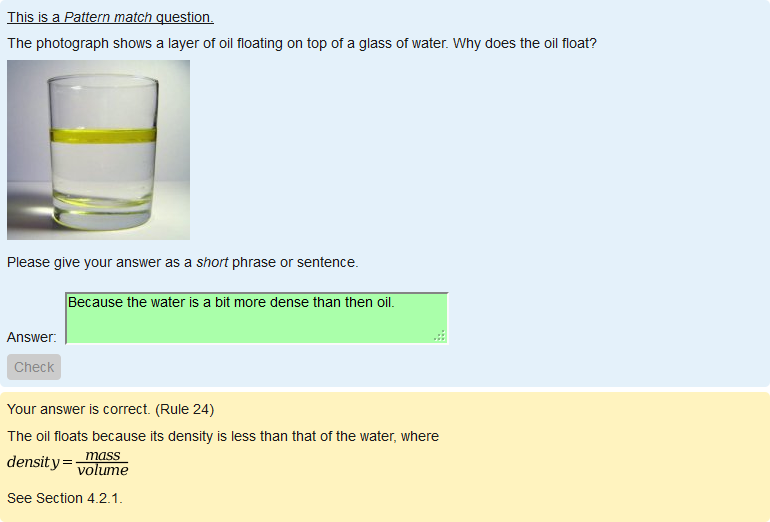Pattern-match question type: Difference between revisions
- Managing questions
- Question behaviours
- Question types
- Calculated
- Simple Calculated
- Drag and drop into text
- Drag and drop markers
- Drag and drop onto image
- Calculated Multichoice
- Description
- Essay
- Matching
- Embedded Answers (Cloze)
- Multiple Choice
- Random Short Answer Matching
- Select missing words
- Short-Answer
- Numerical
- True/False
- Third-party question types
- Questions FAQ
(Moved detailed info to a new page) |
(Added link to * See Pattern-match question type detailed documentation.) |
||
| Line 7: | Line 7: | ||
== More documentation == | == More documentation == | ||
* See [[Pattern-match question type detailed documentation]]. | |||
More [http://www.open.edu/openlearnworks/course/view.php?id=1581 documentation is available] in the [http://www.open.edu/openlearnworks/mod/oucontent/view.php?id=52747 Open University's reference manual]. That includes a description of the pmatch syntax. There is another page that explains [[:dev:The_OU_PMatch_algorithm|The OU PMatch algorithm]], but that was written before development started, and may not be a 100% accurate description of what was finally implemented. | More [http://www.open.edu/openlearnworks/course/view.php?id=1581 documentation is available] in the [http://www.open.edu/openlearnworks/mod/oucontent/view.php?id=52747 Open University's reference manual]. That includes a description of the pmatch syntax. There is another page that explains [[:dev:The_OU_PMatch_algorithm|The OU PMatch algorithm]], but that was written before development started, and may not be a 100% accurate description of what was finally implemented. | ||
Revision as of 01:11, 18 September 2014
Pattern-match questions allow the student to give an answer of up to about 20 words, which can then be automatically graded by matching the students response against a number of different patterns expressed in the PMatch syntax. The first matching pattern determines the score and the feedback.
This is a question type created and maintained by the Open University.
More documentation
More documentation is available in the Open University's reference manual. That includes a description of the pmatch syntax. There is another page that explains The OU PMatch algorithm, but that was written before development started, and may not be a 100% accurate description of what was finally implemented.
